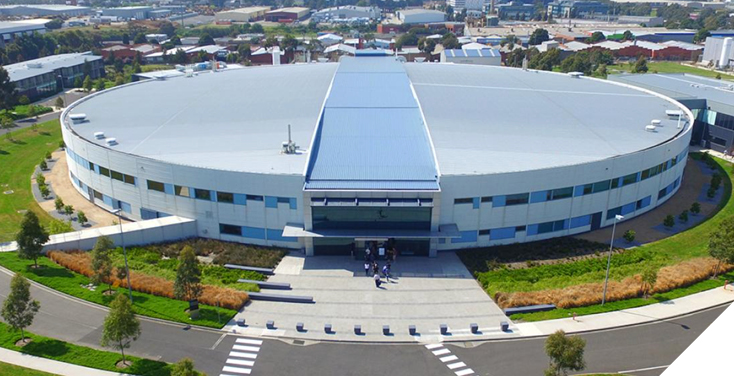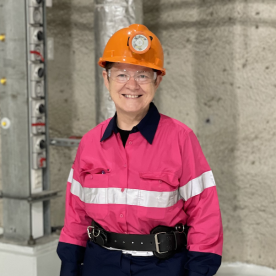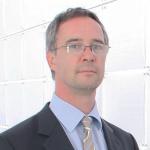
Australia strives to maintain a place at the forefront of internationally collaborative research and innovation, but achieving this depends on sustained investment in the topical suite of research and knowledge infrastructure that will attract, motivate and enable effective collaboration, across disciplines, across institutions and between academia and industry.
This collaboration is especially important to ensure we maximise the reach and scope of our technological progress and the translation of research to deliver social and economic value for Australia.
Join us in this event to discover four distinct research and knowledge infrastructures, varying in size, focus, funding, and governance. The speakers will present their infrastructure’s target audience, overview of operations, and contribution to collaboration and innovation. A panel discussion will explore challenges and opportunities, including obstacles to collaboration, research translation, industry-academic collaboration, innovation, government involvement, and international connectivity.
Speakers

Dr Sue Barrell AO FTSE
Chair, Stawell Underground Physics Laboratory Ltd
Dr Barrell chairs the Stawell Underground Physics Laboratory (SUPL), a low radiation facility constructed one km underground in the Stawell Gold Mine to detect and describe the elusive nature of dark matter and, if successful, solve one of the biggest mysteries of modern physics (and the universe). No pressure.
After a long career at the Bureau of Meteorology, including executive roles in IT, observations, engineering, science and innovation, and international leadership of integrated earth observations, data infrastructure and data policy initiatives, Sue serves in a range of board, council and advisory roles across the science, maths, technology, and education sectors, with a major focus on research infrastructure. In addition to SUPL, Sue chairs the Marine National Facility Steering Committee and the GBR Reef Recovery and Adaptation Panel’s Intervention Risk Review Group. Sue is also a committed mentor and advocate for empowering girls and women to take up science careers and to become confident leaders.
Sue was recognised as an Officer of the Order of Australia in the 2022 Australia Day Honours List and in June 2022 she was awarded Laureate of the World Meteorological Organization’s 67th Annual IMO (International Meteorological Organization) Prize. She has a BSc (Hons) in Physics, Graduate Diploma in Meteorology and a PhD in Astronomy.
![20210427DSC264_StuartCannon1 (002)[43]](https://www.atse.org.au/wp-content/uploads/2023/03/20210427DSC264_StuartCannon1-00243-e1678053295671-276x276.png)
Dr Stuart Cannon FTSE
Program Leader: Maritime Surface and Above Water Combat, Defence Science and Technology Group
Stuart is a naval architect by profession and has been involved in providing acquisition, sustainment and capability assurance advice to the Royal Australian Navy for all of the current surface fleet. He has an Adjunct Professor position at the Centre for Hydrodynamic and Maritime Engineering at Australian Maritime College within the University of Tasmania. Stuart is also the Chairman of the Board for the Australian Diver Accreditation Scheme (ADAS).
Stuart will talk about the Hydrodynamic facilities that are supported by the Department of Defence. This will include details of the cavitation tunnel, tow tank and ocean wave basin situated at AMC, and the new Underwater Explosive Test Facility in Victoria. He will discuss the Defence requirements placed on infrastructure to enable collaboration both within Australia and Worldwide.
![Rosie Hicks (1)[16]](https://www.atse.org.au/wp-content/uploads/2023/03/Rosie-Hicks-116-e1678053319157-276x276.png)
Rosie Hicks
Chief Executive Officer, Australian Research Data Commons
Rosie Hicks is the Chief Executive Officer of the Australian Research Data Commons (ARDC). The ARDC is a sector-wide initiative enabled by the Australian Government’s National Collaborative Research Infrastructure Strategy (NCRIS) to provide Australian researchers with competitive advantage through data. The ARDC’s mission is to accelerate research and innovation by driving excellence in the creation, analysis and retention of high-quality data assets.
Rosie has expertise and extensive knowledge of the Australian research infrastructure sector, and leadership experience as the former CEO of the Australian National Fabrication Facility (ANFF). Her career, spanning Japan, UK and Australia, includes every aspect of scientific instrumentation from product development and technical marketing to the management of multi-user facilities, working in environments that cross academic and industry domains.

Professor Michael James
Acting Director, Australian Synchrotron
Michael was appointed to the role of Acting Director of the Australian Synchrotron in Melbourne in January 2023 and now leads this international user facility which hosts more than 5,500 researcher visits per annum and generates more than 600 scientific research articles each year. In his previous role, Michael led the Science Team at the Australian Synchrotron. He was responsible for operating and developing the original suite of 10 synchrotron beamlines and delivering the next generation of 8 synchrotron beamlines as part of the $100M BRIGHT Program.
Prior to moving to Melbourne in 2013, Michael was a Senior Principal Research Scientist at ANSTO in Sydney; Leader of the Chemical Deuteration Laboratory, and Instrument Scientist for the PLATYPUS Time-of-Flight neutron reflectometer that he designed and built at Australia’s 20 MW OPAL research reactor.
With a research background in chemistry, nanomaterials and magnetism, his research interests include numerous areas of neutron and X-ray scattering; predominantly relating to instrument and technique development, and the study atomic and molecular structures of technologically advanced materials. He has published more than 150 scientific peer-reviewed publications.